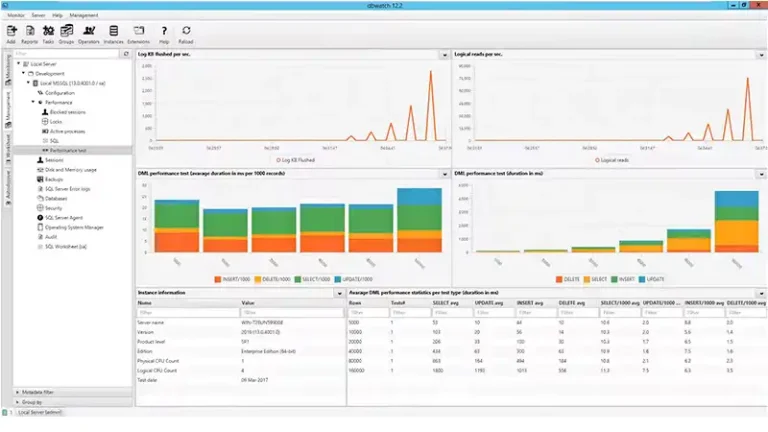How to Calculate the Average of Multiple Rows in SQL
Calculating the average of multiple rows in SQL is a fundamental operation that can provide valuable insights into a dataset. Whether you’re working with financial data, survey results, or any other type of information, understanding how to calculate averages is essential.
We can calculate averages of multiple rows in SQL, we can group data for averaging as well as filter those averages for conditions. In this article, we will explore different approaches to calculating the average in SQL, along with some practical examples.

Calculating Averages of Multiple Rows in SQL
When dealing with datasets in SQL, calculating averages across multiple rows is a fundamental operation. It allows you to derive valuable insights by summarizing data. SQL provides several methods to compute averages effectively.
- Basic Syntax for Calculating Average
The ‘AVG()’ function in SQL is used to calculate the average value of a column.
SELECT AVG(column_name) AS average_value
FROM table_name;
Replace ‘column_name’ with the specific column you want to average and ‘table_name’ with the relevant table.
- Grouping Data for Averaging
To calculate averages for different groups within a dataset, you can use the ‘GROUP BY’ clause.
SELECT group_column, AVG(column_name) AS average_value
FROM table_name
GROUP BY group_column;
Here, ‘group_column’ refers to the column by which you want to group the data.
- Filtering Averages with Conditions
To calculate averages based on specific conditions, you can include a ‘WHERE’ clause.
SELECT AVG(column_name) AS average_value
FROM table_name
WHERE condition;
Replace ‘condition’ with the criteria for filtering the rows.
- Excluding Null Values
Null values can skew the average calculation. To exclude them, you can use functions like AVGIF or COALESCE along with the WHERE clause.
SELECT AVGIF(age IS NOT NULL, age)
FROM students
WHERE age IS NOT NULL;
This query calculates the average age of students excluding those with null values in the age column.

Figure 01
Beyond the Basics: Advanced Techniques
For more complex scenarios, SQL offers additional functions and techniques for calculating averages. Some notable examples include:
- Window functions: These functions operate on a set of rows within a window defined by ordering criteria. They can be helpful for calculating moving averages or averages within a specific range.
- Subqueries: Nested queries can be used to calculate averages based on data retrieved from other tables or derived from within the same query.
- Data Type Compatibility: Ensure that the data type of the column used for averaging is appropriate (e.g., numerical).
- Performance Optimization: For large datasets, consider indexing columns used in calculations to improve query performance.
Examples of Calculating Averages
Some examples are given below regarding this problem to make you understand easily.
Example 1: Simple Average
Let’s say we have a table named ‘sales_data’ with a column ‘revenue’. To calculate the average revenue:
SELECT AVG(revenue) AS average_revenue
FROM sales_data;
Example 2: Grouped Averages
Suppose you want to find the average revenue per product category. If ‘product_category’ is a column in the sales_data table:
SELECT product_category, AVG(revenue) AS avg_revenue_per_category
FROM sales_data
GROUP BY product_category;
Example 3: Conditional Averages
Calculating the average revenue for a specific region (let’s say ‘East’):
SELECT AVG(revenue) AS avg_revenue_east
FROM sales_data
WHERE region = ‘East’;
Frequently Asked Questions
Can I calculate the average of multiple columns in SQL?
Yes, you can calculate the average of multiple columns in SQL by applying the AVG() function separately to each column and then combining the results if needed.
How can I calculate the average of non-numeric values in SQL?
SQL’s AVG() function is designed to work with numeric values. If you want to calculate the average of non-numeric values, you may need to convert them to a numeric data type first or use a different approach, such as calculating the average based on specific conditions using a subquery.
Is it possible to round the average value to a specific decimal place in SQL?
Yes, you can round the average value to a specific decimal place in SQL using the ROUND() function. For example, if you want to round the average to two decimal places, you can use ROUND(AVG(column), 2) in your SQL query.
To Conclude
Calculating averages of multiple rows in SQL is a versatile process that helps derive meaningful insights from datasets. By using functions like ‘AVG()’ along with clauses such as ‘GROUP BY’ and ‘WHERE’, you can efficiently compute averages tailored to your specific analytical needs. SQL offers various possibilities beyond simple averages, allowing you to delve deeper into data analysis and decision-making.







